Taco Sauce Penny Cleaner
It’s one of those things you hear about but wonder if it’s true. Can you use taco sauce to clean the tarnish off of a […]
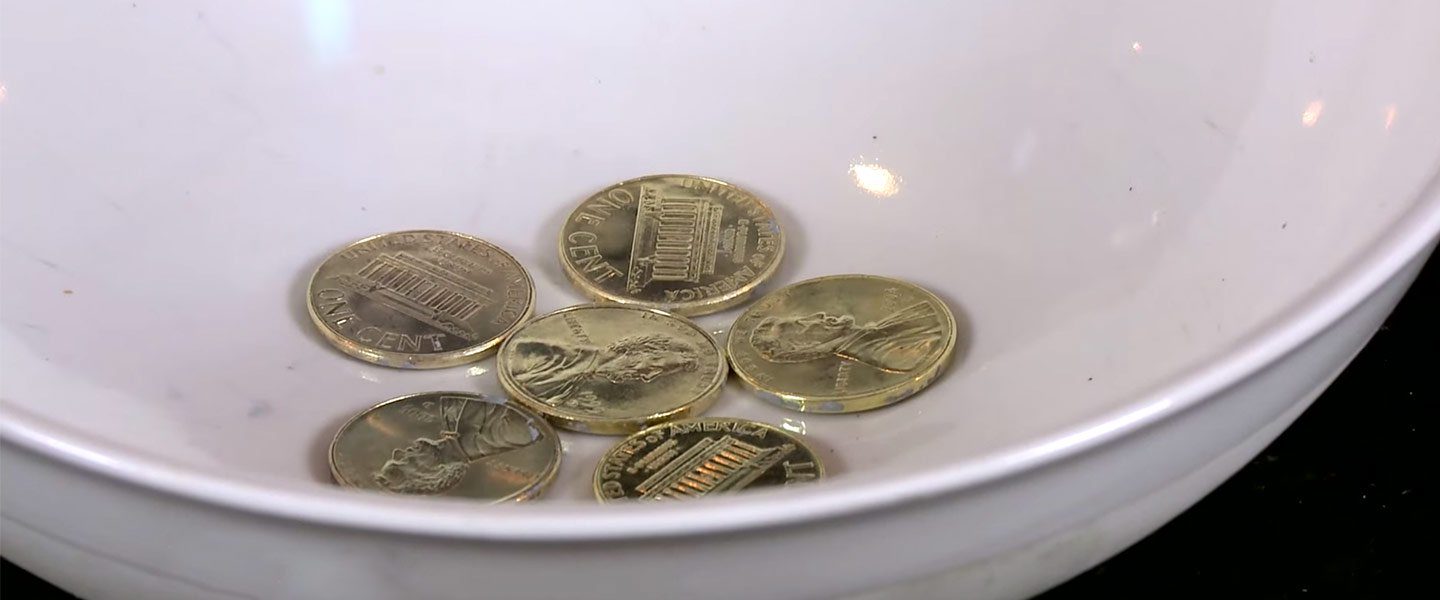
At first glance there appears to be something a bit strange about a gold penny. First, gold pennies don’t really exist. Modern day alchemists, cleverly disguised as chemistry teachers, often share the secret of making gold pennies. Students take home an unforgettable lesson in alloys and a keepsake penny that can never be put back into circulation.
SAFETY NOTE: This activity requires adult supervision. NaOH should be handled with great care. It is corrosive and can burn skin. Zinc dust should not be inhaled. Safety glasses should be worn throughout this entire activity.
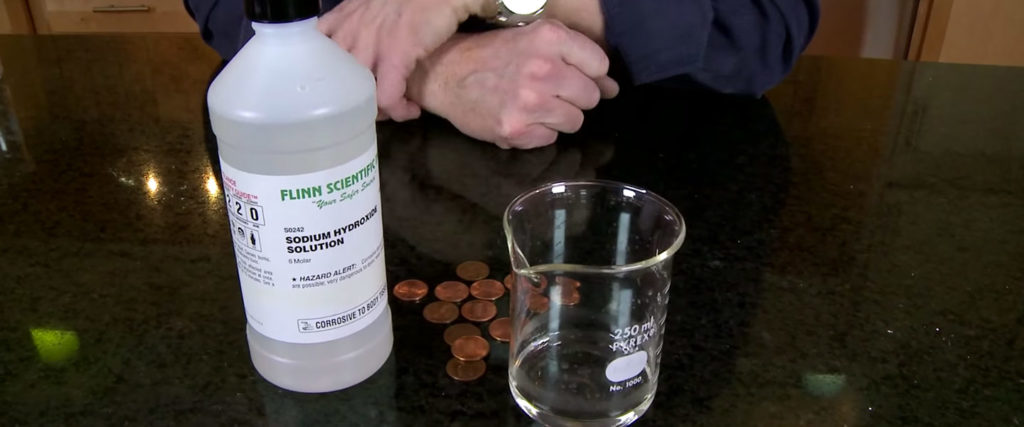
Put on your safety glasses.
Pour 20 mL of NaOH solution to the dish.
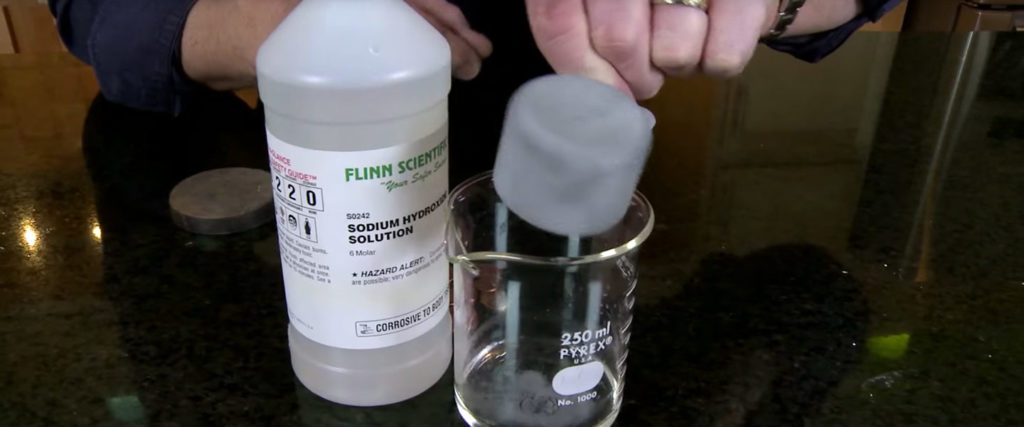
Add the zinc dust in the dish with the NaOH, and gently swirl the mixture together.
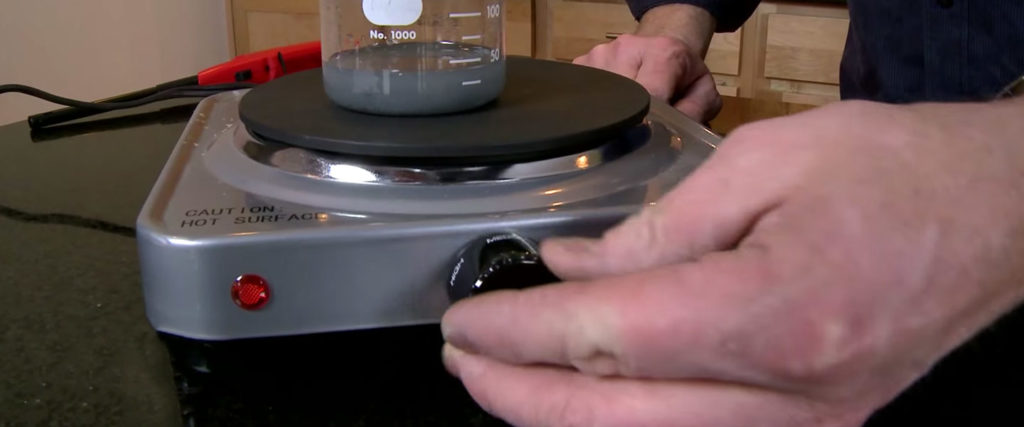
Set the hot plate to medium heat and place the evaporating dish on top.
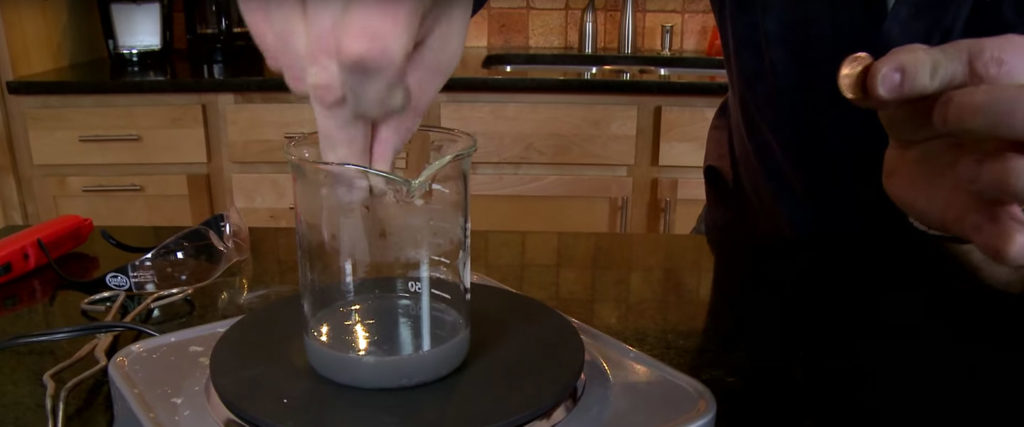
Heat for 5 minutes. Do not boil. When the dish is hot, place a penny in it. Heat for two minutes or until the penny is coated and becomes silver in appearance.
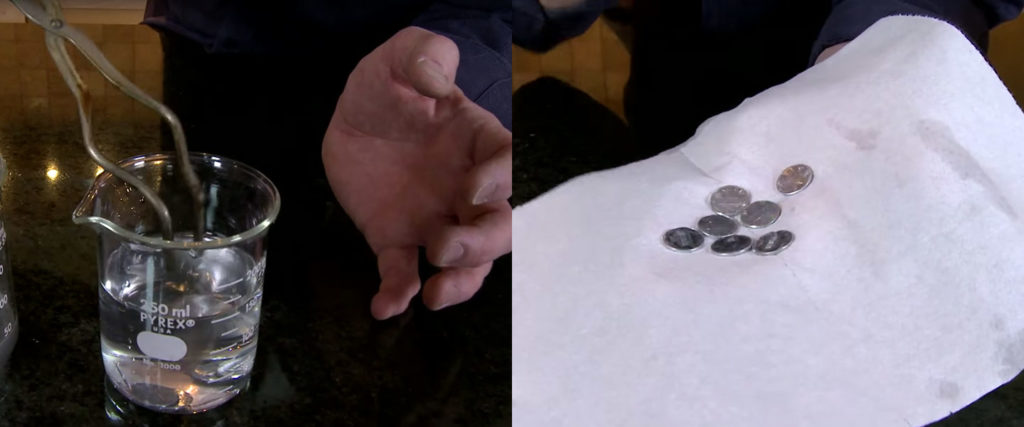
Remove the penny from the dish with tongs and drop it into water. When cool, wipe the penny clean with a cloth to remove any excess zinc.
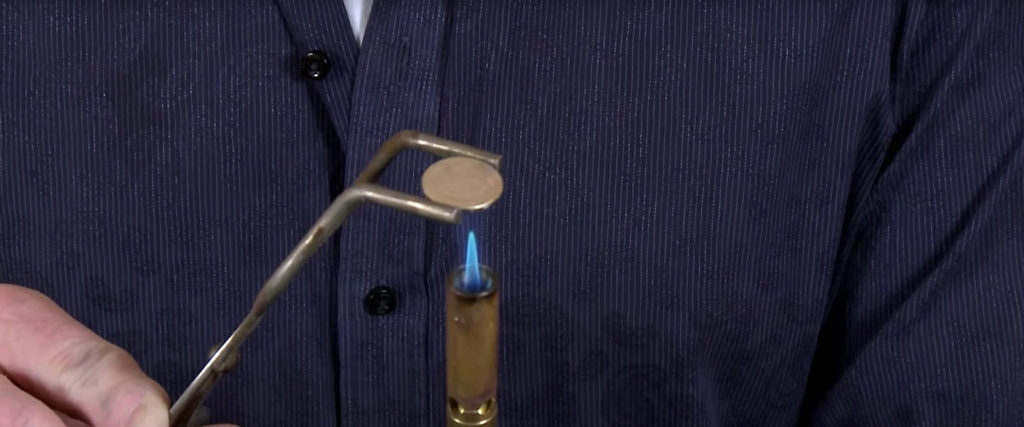
Using tongs, hold the penny in the flame of a Bunsen burner and gently heat. The penny should turn “gold” (brass). (Do not overheat the penny.)
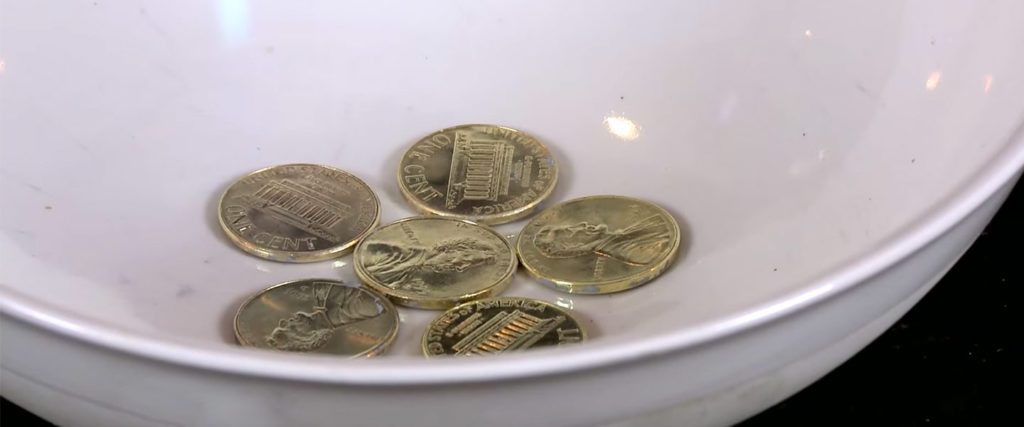
Dip the penny in the beaker of water until it is cool to the touch.
Even though it’s a “gold” penny, the US Treasury has a little problem with people trying to buy something with gold pennies. In 1983, the US Treasury started making pennies with a zinc core with a copper coating… turns out they weigh less and cost less to make than their pre-1983 counterparts, which were made with an alloy of 95% copper and 5% zinc.
In this activity, soaking the penny in the zinc solution actually coats the surface of the penny with zinc atoms. When the zinc covered penny is heated, the copper atoms of the penny and the zinc atoms coating the penny mix and turn gold in color. This mixing of metals is an alloy called “yellow brass.”
Artists often work with alloys like bronze, steel, or brass because of their durability and color. Bronze is a mixture of copper and tin. Brass, made in the activity above, is a mixture of zinc and copper. Steel is made of iron and carbon. Alloys are used to make coins, jewelry, sculptures, and other items.
Alternative Method Using Zinc Chloride
SAFETY NOTE: This activity requires adult supervision. NaOH should be handled with great care. It is corrosive and can burn skin. Zinc dust should not be inhaled. Safety goggles should be worn throughout this entire activity.